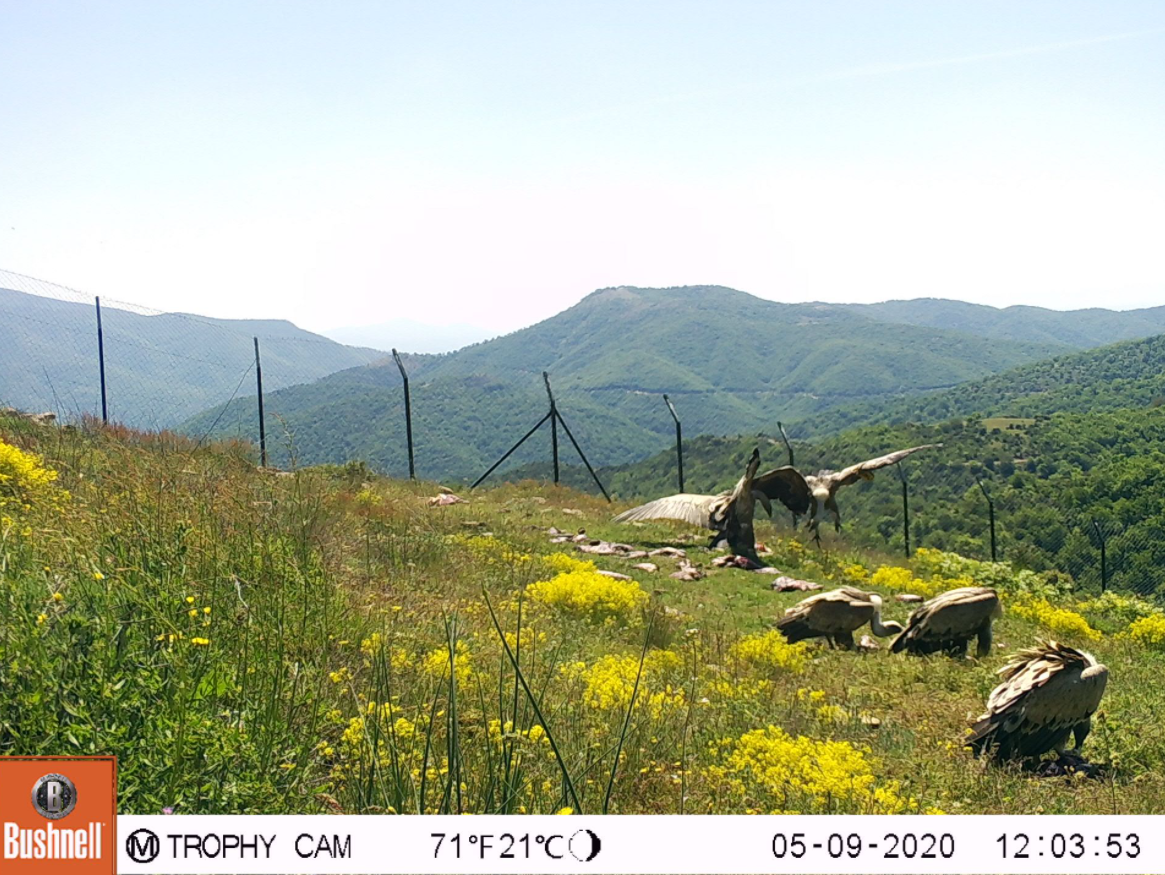
It has been one year now since the operation of the small-sized feeding stations (or also called the vultures “restaurants”) in Kompsatos valley, Greece. The ‘collaboration’ between livestock breeders of Kompsatos valley and nature’s clean-up crew seems to have equally benefited both, as well as other bird species.
Importance of feeding stations at Kompsatos
Right now in Kompsatos, the vultures provide free and natural service of carcass disposal, and in return, the livestock breeders offer them safe food. Thus, reducing the risk of poisoning, which will improve breeding performance and increase survival rates.
To date, around twenty different feedings were carried out by ten livestock breeders who placed dead animals (sheep and goats) at four feeding stations. On an almost regular basis, the WWF Greece team distributes food among the feeding stations. In total, more than four tons of meat originating from slaughterhouses and butchers were provided to vultures.
Visitors at vulture restaurants
The trap cameras installed at the feeding stations allow the LIFE Re-Vultures to follow and observe all guests visiting the place. Of course, throughout the year, the most common species are the permanent residents of the valley: the Griffon Vultures (the annual breeding monitoring of the griffon vultures revealed four active nests in the area), buzzards, golden eagles, ravens and crows. It also has to be noted that in spring and summer, one out of the last three remaining Egyptian Vulture pairs remaining in Greece benefits from the feeding stations’ operation, highlighting their crucial importance for the overall conservation of vultures. In 2019, the birds succeeded in raising one chick. This year, the same pair has been incubating, so they might succeed in breeding again.
Apart from residents and breeders, the feeding stations have hosted other species as well. Recently there was a rare observation of an immature Steppe eagle that must have stopped to feed and rest at one of the feeding stations before continuing its trip. Furthermore, Cinereous Vultures from Dadia-Lefkimi-Soufli Forest National Park and Griffon Vultures from Serbia and Bulgaria have also visited the Kompsatos’ feeding stations, emphasizing the importance of the network of feeding stations in vulture conservation across the Eastern Rhodopes and the Balkans.
Under the current LIFE RE-Vultures project, the Bulgarian Society for the Protection of Birds (BSPB) team conducted a specialized study to reveal the pattern of presence of the Cinereous Vulture in the Bulgarian side of Eastern Rhodopes. As a result, in the period 2016 – 2019, 168 Cinereous Vultures were recorded in a total of 106 feeding attempts in Studen Kladentez area.
Source: Rewilding Rhodopes
LIFE Re-Vultures

Starting in 2016, the five-year LIFE RE-Vultures project was developed by Rewilding Europe, in collaboration with the Rewilding Rhodopes Foundation the Bulgarian Society for the Protection of Birds, WWF Greece, the Hellenic Ornithological Society and us here at the Vulture Conservation Foundation. The aim of the project is to support the recovery and further expansion of the populations of Cinereous and Griffon Vultures in the cross-border region of the Rhodope Mountain by improving natural prey availability, monitoring movements of birds to help understand the threats they face and carrying out activities that will reduce the mortality of the populations from threats such as illegal wildlife poisoning and collisions with electricity infrastructure.

griffonvulture, egyptianvulture, cinereousvulture, re-vultures, 2020-07






